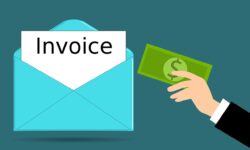Last updated on February 19th, 2024 at 12:47 pm
In today’s digital age, thank you emails to customers are more than just a polite gesture; they are vital in building lasting customer relationships. This guide will dive into the nuances of crafting these emails effectively. The goal here is to provide a comprehensive step-by-step approach to help you create thank you emails that resonate with your audience and reinforce positive customer experiences.
Benefits of Sending Customer Thank You Emails
Here are the key benefits of sending customer thank you emails.
1. Builds Customer Loyalty
Sending a thank you email to customers fosters a sense of appreciation and recognition. This simple gesture can make customers feel valued, leading to increased loyalty. Loyal customers make more repeat purchases and become long-term supporters of your brand.
2. Enhances Customer Experience
A thank you email contributes to a positive customer experience. It shows that a business values the sale and the individual behind it. This personal touch can differentiate your business from competitors who may not take the time to engage in post-purchase communication.
3. Encourages Positive Reviews and Referrals
Content customers often express their positive experiences to others. A thank you email can prompt them to leave a positive review or recommend your services to friends and family.
Small business expert Ramon Ray says,
A thank you email to a customer shows appreciation, builds a personal connection, and encourages future business and positive word-of-mouth recommendations.
Word-of-mouth is a powerful marketing tool; a satisfied customer can be a compelling advocate for your brand.
Also Read: How To Appreciate Customers (Ways That Really Work)
4. Opportunity for Feedback and Improvement
These emails can also serve as an invitation for customers to provide feedback. This insight is invaluable for any business aiming to improve its products or services. Constructive feedback can help you spot improvement areas and guide future business strategies.
5. Increases Customer Retention
Thanking customers can play a crucial role in customer retention. Retaining existing customers is generally cheaper than acquiring new ones. A thank you email can be integral to a retention strategy, keeping your brand at the forefront of customers’ minds.
6. Promotes Ongoing Engagement
Finally, thank you emails can include calls to action, such as invitations to follow your social media profiles or subscribe to a newsletter. This helps maintain ongoing customer engagement, informing them about new products, services, or promotions and nurturing a continuous relationship.
Understanding Your Audience Is Crucial to Sending Customer Thank You Emails
Determining your customer base is crucial for any business, especially when sending thank you emails. These messages are more than just a courtesy; they’re a tool for building lasting relationships. It starts with segmenting your audience.
Different groups of customers might have varying preferences and interests. For instance, repeat customers might appreciate a more personalized message than first-time buyers.
To personalize your emails effectively, gather data about your customers. This can include purchase history, feedback, and engagement with previous emails. Use this information to tailor your message.
For example, if a customer frequently purchases a particular product, mention that in your email. It shows that you pay attention to their preferences.
Language and tone also play a significant role. If your brand voice is generally informal and friendly, maintain that in your thank you emails.
However, a formal tone might be more appropriate for a more professional audience. It’s all about aligning your message with your brand and your customers’ expectations.
Another aspect is cultural sensitivity. If you have an international customer base, be mindful of cultural differences in communication. What works for one demographic might not be suitable for another.
Lastly, consider the customer’s journey with your brand. A new customer might receive a thank you email with an introductory offer or more information about your company. For loyal customers, your message might include a loyalty discount or a sneak peek at new products.
Understanding your audience is not just about sending a thank you email; it’s about crafting a message that resonates with the recipient. It turns a simple gesture into a powerful tool for customer engagement and loyalty.
Also Read: Strategies for Customer Retention Every Business Owner Must Know
How To Craft Impactful Customer Thank You Emails
Here is a step-by-step process to send thank you emails to customers.
Crafting the Perfect Subject Line
The subject line is your first, and sometimes only, chance to grab your customer’s attention. It should be enticing enough to make them want to open the email. An effective subject line is clear, concise, and directly relates to your e-mail’s content.
Here are two examples to illustrate this:
1. A Special Thanks Just for You, [Customer’s Name]!
This subject line is personal and direct. Using the customer’s name adds a personal touch, making the email feel less like a generic marketing message and more like a genuine token of appreciation. It suggests that the email contains something specifically tailored for the recipient, which increases the likelihood of it being opened.
2. Thanks for Your Support! Here’s a Little Something to Show Our Gratitude.
This subject line is effective because it expresses gratitude and hints at a reward or gift inside the email. It creates curiosity and anticipation, encouraging the customer to open the email to discover the ‘little something.’
Remember, the goal of the subject line is to reflect the content of your email in a way that resonates with your audience. It should align with your overall brand voice, whether formal, playful, or somewhere in between.
Additionally, make sure you don’t use all caps or excessive exclamation points, as these can trigger spam filters or come off as insincere. Crafting the perfect subject line requires a balance of creativity and clarity. It’s the gateway to your thank you message, so make it count.
A well-crafted subject line not only boosts your email open rates but also sets the tone for your appreciation.
Writing the Email Body
The body of your thank you email is where you express your gratitude and connect with your customers. It’s essential to strike the right balance between warmth and professionalism. Your email should be heartfelt, concise, and reflect your brand’s voice.
Here are two examples to illustrate effective thank you email bodies:
1. Example for a Retail Customer
Dear [Customer’s Name],
We can’t thank you enough for choosing [Brand Name] for your latest purchase. We hope your new [Product Name] brings you joy! It’s customers like you who make our work so fulfilling. We’re just an email away if you have any questions or need assistance.
Warm regards,
The [Brand Name] Team
This email is personal and appreciative and offers further support, enhancing the customer’s experience with the brand. It acknowledges the customer’s choice, making them feel valued.
2. Example for a Service-Based Business
Hello [Customer’s Name],
Thank you for trusting us with your [service provided]. We’re thrilled to have you with us and are committed to ensuring you get the best experience. Your support means the world to us! Please don’t hesitate to reach out if you have feedback or need help.
Best,
[Your Name] and the [Company Name] Team
This warm and personal email focuses on the relationship built through the service provided. It invites feedback, showing the company values customers’ opinions and wishes to improve their experience.
In both examples, the emails are concise, express genuine gratitude, and encourage further communication. They personalize the message, making the customer feel unique and valued. This approach not only strengthens customer relationships but also boosts the overall perception of your brand.
Adding a Call-to-Action (CTA)
A Call-to-Action (CTA) in a thank you email is a strategic way to guide your customers towards the next step in their journey with your brand. It should be subtle and relevant, enhancing the customer experience without overshadowing the main message of gratitude.
Here are two examples:
1. Example for an Online Store:
Again, thank you for shopping with us. If you loved your [Product Name], why not share the love? Refer a friend, and you can enjoy a 10% discount on your next purchase. Share the joy here: [Referral Link].
Cheers,
The [Brand Name] Team
This CTA encourages the customer to engage in a referral program. It’s a win-win situation: the customer gets a discount, and your business gains potential new customers. The tone is friendly, and the offer is mutually beneficial, which aligns with the overall thank you message.
2. Example for a Subscription Service
We’re so grateful for your continued support. As a token of our appreciation, we’d like to offer you an exclusive preview of our upcoming features. Be the first to try them by clicking here: [Preview Link].
Best wishes,
The [Service Name] Team
This CTA offers early access to new features, making the customer feel valued in the community. It provides additional value and deepens the customer’s engagement with your service.
In both examples, the CTAs are integrated seamlessly into the thank you message, offering additional value to the customer. They should be relevant, provide clear benefits, and align with the overall tone of the email. Effective CTAs can turn a simple thank you into an opportunity for further engagement and customer loyalty.
Design and Layout Tips
The design and layout of your thank you email play a significant role in how your message is perceived. A well-designed email is visually appealing and enhances readability and engagement.
Here are two examples demonstrating effective design and layout strategies:
1. Example for a Boutique Store
Imagine an email with a clean, minimalist layout reflecting the boutique’s aesthetic. The logo is at the top, followed by a simple, elegant font for the text. The color scheme mirrors the store’s branding, using soft, pastel colors. A single, high-quality image of the product purchased adds a personal touch. The email concludes with a neatly formatted signature and a discreet, stylish CTA button.
This design is consistent with the boutique’s brand, creating a seamless customer experience. The use of space, color, and imagery conveys a sense of luxury and attention to detail.
2. Example for a Tech Company
Envision an email that’s sleek and modern. It starts with the company’s logo, followed by a bold, readable font. The color scheme is vibrant, featuring the company’s signature colors. Interactive elements, like a slider showing customer reviews or a clickable tour of new features, add an engaging, dynamic layer. The CTA is a brightly colored button that stands out but doesn’t overwhelm the overall design.
This layout is dynamic and interactive, reflecting the innovative nature of a tech company. The interactive elements make the email more engaging and provide additional value to the customer.
Both examples’ design and layout are tailored to reflect the brand’s identity and enhance the customer’s experience. The key is maintaining brand consistency, using space effectively, and ensuring the design complements the message.
A well-designed email makes the recipient feel valued and reinforces the positive image of your brand.
Timing and Frequency
Choosing the right time and frequency for sending thank you emails is crucial. It affects how your message is received and can influence customer perception of your brand. The key is to be timely yet not overbearing.
For timing, consider sending the email shortly after a customer interaction, like a purchase or service usage. This immediacy helps link your gratitude to a specific action, making the message more personal and relevant.
For example, a thank you email sent within 24 hours of a purchase acknowledges the customer’s action and keeps your brand fresh in their mind.
However, the frequency of these emails should be carefully managed. Over-sending can lead to email fatigue, where customers become desensitized to your messages.
For regular customers, consider sending a consolidated thank you email monthly or quarterly, highlighting their ongoing support and any new developments they might find interesting. This approach respects their inbox space while maintaining a connection.
Seasonal or annual thank you emails can also be effective. They offer an opportunity to reflect on the past year or season and express gratitude for the customer’s support over that period. This type of email can also coincide with special events or milestones for your company, giving it a celebratory tone.
It’s also essential to segment your audience for these emails. New customers might appreciate immediate acknowledgment, while long-term customers might value a more in-depth yearly recap.
Tailoring the timing and frequency to different customer groups ensures your message resonates and maintains its sincerity.
In summary, the right timing and frequency of thank you emails can enhance customer relationships. It shows attentiveness and appreciation without overwhelming the customer, striking a balance between gratitude and respect for their communication preferences.
Testing and Feedback
Testing different versions of your thank you emails is essential to understand what resonates best with your audience. A/B testing, where you change one element at a time (like the subject line, email body, or CTA), can reveal valuable insights into customer preferences.
For instance, you might find that a more personal subject line increases open rates or a specific CTA leads to higher engagement.
Gathering customer feedback is equally important. Consider including a short survey link in your email or a simple question asking their thoughts about the email. This provides direct feedback and shows your customers that you value their opinions and are committed to improving.
Remember, the goal is to refine your approach based on real data and feedback continuously. This helps in crafting thank you emails that express gratitude and strengthen your relationship with your customers.
Regularly analyzing the performance of your emails ensures that your communication strategy remains effective and responsive to your audience’s needs.
Using Email Automation Tools
Email automation tools are essential for efficiently managing thank you emails, especially when dealing with a large customer base. These tools can help you easily schedule emails, segment your audience, and personalize messages.
For instance, tools like Mailchimp or Constant Contact offer features to automate email delivery based on customer actions like a purchase or subscription renewal. This ensures timely and relevant communication.
Additionally, these tools provide analytics to track the performance of your emails, allowing you to refine your strategy for better engagement.
Integrating an email automation tool into your customer relationship management strategy can significantly enhance your efficiency and effectiveness in maintaining customer relations.
Examples of Customer Thank You Emails
Here are ready-to-copy, ready-to-edit customer thank you email templates.
Thank You Email for First-Time Purchase
Hello [Customer’s Name],
We’re thrilled to welcome you to the [Brand Name] family! Thank you for your first purchase of [Product Name]. We’re committed to providing you with the best experience and quality products. Feel free to reach out if you have any questions or need help.
As a token of our appreciation, here’s a 15% discount on your next purchase. Enjoy!
Warm regards,
The [Brand Name] Team
Post-Service Thank You Email
Dear [Customer’s Name],
Thank you for choosing [Service Name] for your [service provided]. We hope our service exceeded your expectations. Your feedback is crucial for us to continue improving.
Please take a moment to share your experience [Feedback Link]. As a thank you, here’s a 20% discount on your next service booking with us.
Best,
[Your Name], [Service Name]
Event Attendance Thank You Email
Hi [Customer’s Name], A huge thank you for attending our recent event, [Event Name]!
We hope you found it informative and enjoyable. We’d love to hear your thoughts: [Feedback Link]. To stay updated on future events and exclusive offers, follow us on [Social Media Links].
Cheers,
[Your Name], [Company Name]
Loyal Customer Appreciation Email
Hello [Customer’s Name],
As one of our most valued customers, your continued support means the world to us. We’re giving you early access to our upcoming sale to show our gratitude. Here’s your exclusive access link: [Early Access Link]. Thank you for being a part of our journey.
Best wishes,
The [Brand Name] Team
Post-Consultation Thank You Email
Dear [Customer’s Name],
Thank you for consulting with [Your Company Name]. We hope our session provided the insights and guidance you were looking for. Your thoughts are important to us, so please share any feedback here: [Feedback Link].
For further consultation or assistance, we’re just an email away.
Kind regards,
[Your Name], [Your Position]
Thank You Email for Online Course Enrolment
Hi [Customer’s Name],
Welcome to [Course Name]! We’re excited to have you on board. Thank you for choosing us to further your learning journey. Your course materials are ready in your dashboard.
For any questions, our support team is here to help. Also, enjoy a 10% discount on your next course with this code: THANKS10.
Happy learning,
The [Course Provider] Team
Seasonal Purchase Thank You Email
Dear [Customer’s Name],
We’re grateful you chose us for your holiday shopping! Thank you for purchasing [Product Name]. We hope it adds joy to your season. As a token of our appreciation, here’s a special gift card for your next visit. Keep an eye out for our New Year’s specials!
Season’s greetings,
The [Brand Name] Team
Feedback Submission Thank You Email Hello [Customer’s Name],
Thank you for sharing your valuable feedback with us. Your insights help us improve and serve you better. As a gesture of our appreciation, please enjoy this exclusive 15% off coupon on your next purchase. Your opinion truly makes a difference.
With gratitude,
The [Company Name] Customer Experience Team
After a Major Purchase Thank You Email
Hi [Customer’s Name], A big thank you for trusting us with your recent purchase of [Major Product]. We understand it’s a significant investment, and we’re here to support you every step of the way. If you have any questions or need assistance, please reach out. Enjoy a complimentary [Related Product/Service] on us!
Best regards,
The [Brand Name] Team
Charity Donation Thank You Email
Dear [Donor’s Name],
Thank you for your generous donation to [Charity Name]. Your contribution is making a real difference in [cause supported]. To see the impact of your donation, visit [Link to Impact Stories]. We’re grateful for your support and hope to continue making a positive change together.
With heartfelt thanks,
[Your Name], [Charity Name]
Mistakes To Avoid When Writing Thank You Emails to Customers
Here are important mistakes you should avoid while writing thank you emails to your customers.
Lack of Personalization
Sending generic thank-you emails can make customers feel unappreciated. Personalizing emails, at least with the customer’s name, is crucial to make them feel valued. A personal touch shows you recognize and appreciate their choice to engage with your brand.
Overly Promotional Content
The primary purpose of a thank you email is to express gratitude, not to push sales. Overloading the email with too many promotions or sales pitches can detract from the sincerity of your thanks and might turn customers off.
Ignoring Brand Voice and Tone
Your thank you email should align with your brand’s voice and tone. Inconsistent messaging can confuse customers and weaken your brand identity. Whether your brand voice is formal, casual, or playful, ensure your thank you email reflects this.
Neglecting to Proofread
Grammatical errors, typos, or incorrect information can significantly undermine the professionalism of your message. It’s essential to proofread your emails carefully.
Errors can indicate carelessness and diminish the perceived quality of your brand.
Inappropriate Timing
Sending thank you emails too late after the interaction can lessen the impact. Timeliness is critical – the message should arrive when the customer’s experience with your product or service is still fresh in their mind. This makes your gratitude seem more relevant and genuine.
FAQs About Thank You Emails to Customers
How do you professionally thank a customer?
To professionally thank a customer, personalize your message with their name, express genuine gratitude for their patronage, and align it with your brand’s tone. Keep it concise, timely, and free of promotional content, focusing solely on appreciating the customer’s choice to engage with your business.
How do you express gratitude in an email to a client?
To express gratitude in an email to a client, personalize the message, mention specific details about your interaction, and convey sincere thanks. Keep the tone warm and professional, and if appropriate, offer continued support or a small token of appreciation to strengthen the relationship.
Now, It’s Time To Send Thank You Emails to Customers
Thank you emails to customers are vital in building and maintaining strong customer relationships. They show appreciation for the customer’s business and reinforce your brand’s commitment to excellent service.
By personalizing your thank you emails to customers and ensuring they align with your brand’s voice, you can turn a simple gesture of gratitude into a powerful means of customer engagement and loyalty.
Remember, a heartfelt thank you goes a long way in leaving a lasting positive impression.
Additional Resources
- Importance of Customer Feedback in Driving Small Business Growth
- Customer Acquisition Strategies That Bring Results Fast
- Why Listening to Customers Is Important (and How To Do It)
- How To Deal With Difficult Customers
- How To Write a Customer Apology Email
- How To Write a Perfect out of the Office Email Message



